Top 5 Wildlife Sanctuaries Near Hyderabad
Published: 19 Jun 2025
Hyderabad, the vibrant capital city of Telangana, is famous for its historic monuments, thriving culture and delicious food. But did you know that it’s also surrounded by some of India’s most captivating wildlife sanctuaries? These sanctuaries are located just a short drive away from the city and provide an excellent opportunity to escape the hustle and bustle of urban life and connect with nature.
Whether you are an animal lover, a bird watcher or simply someone looking to enjoy a peaceful day surrounded by greenery, these sanctuaries are the perfect places to unwind. From spotting rare wildlife to experiencing the serene beauty of forests and lakes, these destinations offer something for every nature enthusiast. In this article, we will explore the top 5 wildlife sanctuaries near Hyderabad that you can visit for an unforgettable wildlife experience.
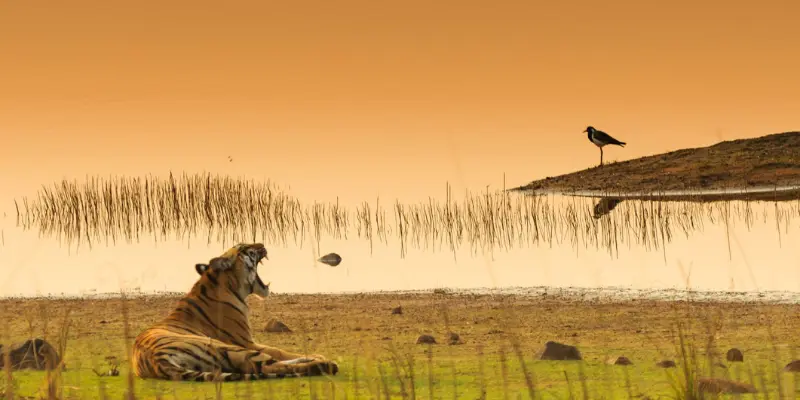
Here is the list of Wildlife Sanctuaries near Hyderabad:
- Pocharam Wildlife Sanctuary
- Manjira Wildlife Sanctuary
- Nehru Zoological Park
- Mahavir Harina Vanasthali National Park
- Tadoba National Park
1). Pocharam Wildlife Sanctuary: A Nature Lover’s Retreat
Pocharam Wildlife Sanctuary is located in the Medak and Nizamabad districts of Telangana, India. Spanning over 130 square kilometers, it was established in 1952 and was once a hunting ground for the Nizams. The sanctuary is named after Pocharam Lake, formed by the Pocharam Dam on the Allair River between 1916 and 1922. The sanctuary is approximately 115 km from Hyderabad and 15 km from Medak.
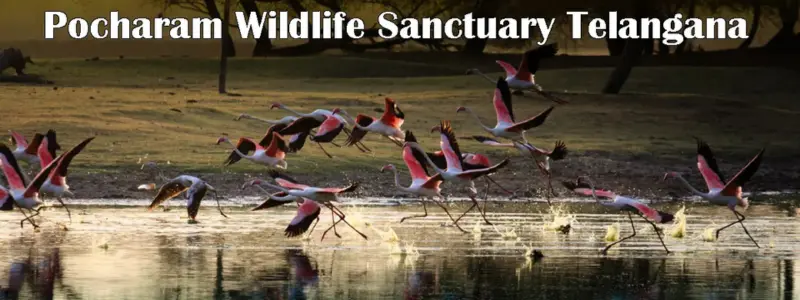
Flora and Fauna
The sanctuary boasts a rich diversity of flora and fauna. The vegetation includes a mix of dry deciduous forests with species like teak, rosewood and various shrubs. Pocharam Lake attracts numerous migratory birds including Bar-headed Geese, Brahminy Ducks and Open-billed Storks. Wildlife species such as leopards, sloth bears, wild dogs, wolves, jackals and various antelope species like Nilgai, Chinkara and Chital are also found here. The sanctuary is also home to reptiles like marsh crocodiles, freshwater turtles and various species of fish.
Best Time to Visit
The ideal time to visit Pocharam Wildlife Sanctuary is from October to March. During these months, the weather is pleasant and wildlife sightings are more frequent. The sanctuary remains closed during the monsoon season (July to September) due to the risk of landslides and slippery roads.
Things to Do
- Trekking: Embark on a 4.5 km trek through the sanctuary’s dense forests, offering a close encounter with nature.
- Bird Watching: Visit the watchtower for panoramic views and birdwatching opportunities.
- Boating: Enjoy boating on Pocharam Lake, especially during the monsoon when the water levels are high.
- Photography: Capture the sanctuary’s diverse wildlife and scenic landscapes.
How to Reach
- By Air: The nearest airport is Rajiv Gandhi International Airport in Hyderabad, approximately 115 km away.
- By Train: The nearest railway stations are Kamareddy (20 km) and Akkannapet (19.1 km).
- By Road: Regular buses and taxis are available from Hyderabad and Medak to the sanctuary.
Entry Fees and Timings
- Entry Fee:
- Adults: ₹20
- Children: ₹10
- Car: ₹100
- Two-Wheeler: ₹40
- Adults: ₹20
- Timings: The sanctuary is open daily from 8:30 AM to 5:30 PM.
Nearby Attractions
- Medak Cathedral: A beautiful example of Gothic architecture.
- Medak Fort: Offers panoramic views of the surrounding area.
- Pocharam Dam: Ideal for a peaceful day out.
Also Read: Best Places to Visit in India
2). Manjira Wildlife Sanctuary: A Birdwatcher’s Paradise
Manjira Wildlife Sanctuary is located in the Medak district of Telangana, approximately 50 km northwest of Hyderabad. Spanning over 20 square kilometers, it was established in 1978 to protect the endangered mugger crocodile and has since become a haven for various bird species. The sanctuary is situated along the Manjira River which is a tributary of the Godavari River and includes a man-made reservoir crucial for providing drinking water to Hyderabad and Secunderabad.
Flora and Fauna
Flora: The sanctuary features a freshwater ecosystem with dry savanna-type vegetation. Common plant species include Typha, Ipomoea, Acacia, Prosopis, Vallisneria, Eichhornia and various reeds.
Fauna: Manjira is home to a diverse range of wildlife:
- Mammals: Indian hare, wild boar, mongoose, jackal and the endangered mugger crocodile.
- Birds: Over 70 species, including Painted Storks, Herons, Coots, Teals, Cormorants, Pochards, Black and White Ibises, Spoonbills, Open-billed Storks, and the vulnerable Indian Skimmer.
- Reptiles: Monitor lizards, freshwater turtles, and cobras.
- Fish: Catla, Rohu, Murrel, Eel, Karugu, and Chidwa.
Best Time to Visit
The ideal time to visit Manjira Wildlife Sanctuary is from November to March. During these months, the weather is pleasant and birdwatching opportunities are abundant as many migratory birds visit the sanctuary.
Things to Do
- Bird Watching: With over 70 species of birds, it’s a paradise for bird enthusiasts.
- Boat Rides: Enjoy adventurous boat rides around the sanctuary, offering close-up views of the islands and birdlife.
- Visit the Environmental Education Center: Explore the museum, library and auditorium to learn about nature conservation and ecological balance.
How to Reach
- By Air: The nearest airport is Rajiv Gandhi International Airport in Hyderabad, approximately 60 km from the sanctuary.
- By Train: The nearest railway station is Shankarpally, about 50 km away.
- By Road: Manjira Wildlife Sanctuary is located 5 km from Sangareddy Town and can be reached by local buses or taxis from Hyderabad.
Entry Fees and Timings
- Entry Fee: Approximately ₹20 per person.
- Timings: Open daily from 8:00 AM to 5:00 PM.
Nearby Attractions
- Singur Dam: Located 36 km from Sangareddy, it’s a reservoir offering scenic views.
- Kondapur Museum: Situated 18 km from Sangareddy, this archaeological museum is a popular tourist destination
3). Nehru Zoological Park: A Wildlife Wonderland in Hyderabad
Nehru Zoological Park is located near Mir Alam Tank in Hyderabad, Telangana and is one of India’s largest and most popular zoos. Established in 1963 and spread over 380 acres, it houses over 194 species of animals, birds and reptiles . The zoo is named after India’s first Prime Minister, Jawaharlal Nehru, and is managed by the Telangana Forest Department.
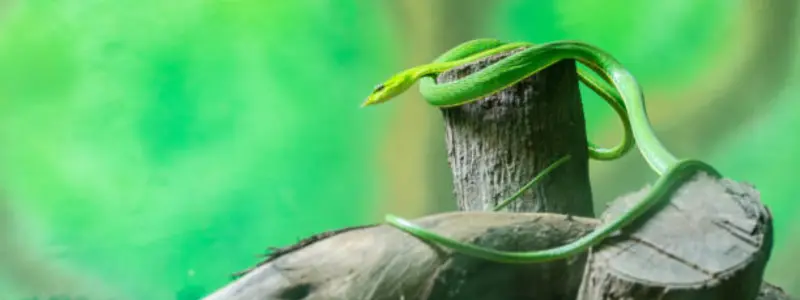
Flora and Fauna
The zoo boasts a diverse range of wildlife:
- Mammals: Asiatic lions, Bengal tigers, Indian rhinoceros, panthers, sloth bears, and elephants.
- Birds: Peacocks, flamingos, hornbills, parrots, and vultures.
- Reptiles: Crocodiles, pythons, cobras, and monitor lizards.
In 2025, the zoo introduced new species, including Chinkara (Indian gazelle), Swamp Deer, Cheer Pheasants, and Siamese Crocodiles, through exchange programs with other zoos.
Best Time to Visit
The ideal time to visit Nehru Zoological Park is during the cooler months:
- October to March: Pleasant weather with active animals.
- April to June: Hotter months; early morning visits are recommended.
The zoo remains closed on Mondays and operates from 8:30 AM to 4:00 PM on weekdays.
Things to Do
- Safari Rides: Experience Lion, Tiger, Bear, and Bison safaris for up-close animal encounters.
- Toy Train: Enjoy a scenic ride around the zoo.
- Battery-Operated Vehicles: Eco-friendly rides for comfortable exploration.
- Aquarium: Explore marine life in the zoo’s aquarium.
- Butterfly Park: Witness various butterfly species in a dedicated park.
- Nocturnal Animal House: Observe nocturnal animals in a simulated night environment.
How to Reach
- By Air: Hyderabad’s Rajiv Gandhi International Airport is approximately 22 km from the zoo.
- By Train: The nearest railway station is Hyderabad Deccan (Nampally), about 7 km away.
- By Road: The zoo is well-connected by TSRTC buses and taxis from various parts of the city.
Entry Fees and Timings
- Entry Fees (Effective from March 1, 2025):
- Adults: ₹100
- Children (3–12 years): ₹50
- Adults: ₹100
- Safari Rides:
- Adults: ₹100
- Children: ₹100
- Adults: ₹100
- Toy Train:
- Adults: ₹80
- Children: ₹40
- Adults: ₹80
- Battery-Operated Vehicles:
- Adults: ₹120
- Children: ₹70
- Adults: ₹120
- Other Attractions:
- Aquarium: ₹20
- Nocturnal Animal House: ₹20
- Reptile House: ₹30
- Aquarium: ₹20
Note: Prices are subject to change; please check the official website for the most current information.
Suggested article: Best 2 days trips from Hyderabad for couples
Nearby Attractions
- Mir Alam Tank: Adjacent to the zoo, it’s one of the oldest masonry dams in the world.
- Chilkur Balaji Temple: A historic temple located about 20 km from the zoo.
- Ramoji Film City: A popular film studio complex and theme park approximately 25 km away.
You May Want To Read: Top 10 Tourist Places to Visit in India
4). Mahavir Harina Vanasthali National Park: A Sanctuary for Blackbucks
Mahavir Harina Vanasthali National Park is located in Vanasthalipuram, approximately 15 km from Hyderabad, Telangana. Established in 1975 to commemorate the 2500th birth anniversary of Lord Mahavir, the 24th Tirthankara of Jainism, the park was once the hunting grounds of the Nizams of Hyderabad. Today, it serves as a protected area dedicated to the conservation of wildlife, particularly the endangered blackbuck antelope, which is the state animal of Andhra Pradesh.
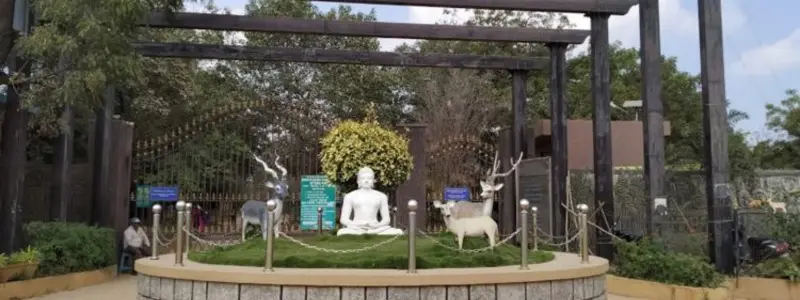
Flora and Fauna
Flora: The park features dry deciduous forests interspersed with scrub jungles and grasslands. Notable tree species include sandalwood, rosewood, palas (flame-of-the-forest), amalthas (Indian laburnum), various acacias, and teak.
Fauna: Mahavir Harina Vanasthali National Park is home to a diverse range of wildlife:
- Mammals: Blackbucks, chital (spotted deer), wild boars, porcupines, and Indian gray mongoose.
- Birds: Over 120 species, including peacocks, vultures, doves, kingfishers, cormorants, and migratory species like the short-toed eagle.
- Reptiles: Approximately 30 species, such as monitor lizards and various snakes.
- Insects: Diverse species, including butterflies and beetles.
Best Time to Visit
The ideal time to visit Mahavir Harina Vanasthali National Park is between October and February. During these months, the weather is cooler, making it comfortable for outdoor activities and increasing the chances of wildlife sightings.
Things to Do
- Safari Rides: Experience guided van safaris that offer close encounters with wildlife.
- Bird Watching: Bring binoculars and a camera to observe and photograph various bird species.
- Nature Walks: Explore the park’s trails to enjoy its flora and fauna.
- Visit the Butterfly Park: Located towards the northern end of the park, it attracts a variety of butterfly species.
- Explore the Wildlife Museum: Learn about the park’s biodiversity through exhibits and displays.
How to Reach
- By Air: The nearest airport is Rajiv Gandhi International Airport in Hyderabad, approximately 44 km from the park.
- By Train: The nearest railway station is Secunderabad Junction, about 15 km away.
- By Road: The park is easily accessible via National Highway 65 (Hyderabad-Vijayawada Road). Local buses, taxis, and auto-rickshaws are available from various parts of Hyderabad.
Entry Fees and Timings
- Entry Fee:
- Adults: ₹20
- Children: ₹15
- Safari Ride: ₹20
- Adults: ₹20
- Timings:
- Open from 9:00 AM to 5:00 PM, Tuesday to Sunday.
- Closed on Mondays for maintenance.
- Open from 9:00 AM to 5:00 PM, Tuesday to Sunday.
Nearby Attractions
- Nehru Zoological Park: Located approximately 15 km from Mahavir Harina Vanasthali National Park, it is one of the largest zoos in India.
- Chilkur Balaji Temple: Situated about 20 km away, this historic temple is known for its serene atmosphere.
- Ramoji Film City: Approximately 25 km from the park, it is a popular film studio complex and theme park.
5). Tadoba National Park: The Jewel of Maharashtra’s Wilderness
Tadoba National Park, located in the Chandrapur district of Maharashtra, is the state’s oldest and largest national park. Established in 1955, it became part of the Tadoba Andhari Tiger Reserve in 1995, encompassing 1,727 square kilometers of rich biodiversity. The park is renowned for its significant tiger population and diverse wildlife, making it a premier destination for wildlife enthusiasts and photographers.
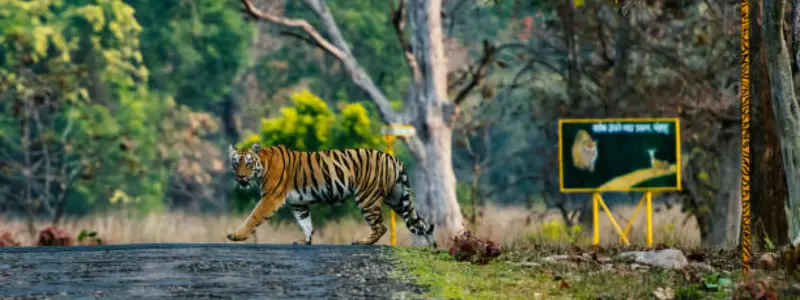
Flora and Fauna
Flora: The park features dense teak forests interspersed with bamboo thickets, open meadows and water bodies. Notable tree species include teak, bamboo, tendu, salai, and flame-of-the-forest.
Fauna: Tadoba is home to a variety of wildlife:
- Mammals: Bengal tigers, Indian leopards, sloth bears, wild dogs (dholes), Indian bison (gaur), sambar, chital, nilgai, and barking deer.
- Reptiles: Mugger crocodiles, Indian pythons, and various species of turtles and snakes.
- Birds: Over 195 species, including grey-headed fish eagle, crested serpent eagle, and Indian pitta.
- Insects: 74 species of butterflies, such as monarchs and swordtails, and various dragonflies and beetles.
Best Time to Visit
The ideal time to visit Tadoba National Park is from October to February, during the dry winter months when wildlife is more active and water sources are limited, increasing animal sightings. The park remains closed from 1st July to 15th October during the monsoon season.
Things to Do
- Safari Rides: Experience morning and evening safaris in open gypsies or canters to spot tigers and other wildlife.
- Bird Watching: With over 195 bird species, it’s a haven for bird enthusiasts.
- Photography: Capture the diverse flora and fauna in their natural habitat.
- Nature Walks: Guided walks to explore the park’s ecosystem and learn about its biodiversity.
- Adventure Activities: Engage in activities like zip-lining and zorbing at Agarzari Adventure Park.
How to Reach
- By Air: The nearest airport is Dr. Babasaheb Ambedkar International Airport in Nagpur, approximately 106 km from the park.
- By Train: Chandrapur Railway Station is about 45 km away and is well-connected to major cities.
- By Road: The park is accessible via National Highway 44 and local transport options like taxis and buses are available from Chandrapur and Nagpur.
Entry Fees and Timings
- Entry Fee: Approximately ₹20 per person.
- Safari Fees: Gypsy safari: ₹1,000 per vehicle; Guide fee: ₹300.
- Timings: Morning safari: 6:00 AM – 11:00 AM; Evening safari: 2:00 PM – 6:00 PM.
Nearby Attractions
- Agarzari Adventure Park: Offers activities like zip-lining and zorbing.
- Chandrapur Fort: A historical fort located in the city of Chandrapur.
- Gorewada Lake: A serene spot for picnics and bird watching.
Suggested Article: Adventure Tourism in India
Tips to Follow While Visiting Hyderabad Wildlife Sanctuaries
Wildlife adventures are always very interesting and if you follow the safety measure it becomes more interesting and memorable. Let’s discuss simple tips to follow for visiting a Wildlife Sanctuary.
1. Wear Appropriate Clothing
- Light-colored and breathable clothes: These help in blending with the environment and prevent attracting insects.
- Comfortable shoes: Ideal for walking and trekking in the sanctuary.
2. Carry Essentials
- Water: Stay hydrated, especially in warm weather.
- Sunscreen and Hat: Protect yourself from the sun while you explore the sanctuary.
- Insect Repellent: Helps prevent insect bites, especially in forests and near water bodies.
- Binoculars and Camera: For wildlife spotting and photography, with a good zoom lens to capture distant animals.
- Snacks: Carry light snacks, especially if you plan on spending long hours in the sanctuary.
3. Respect Wildlife
- Maintain a Safe Distance: Never get too close to animals. Respect their space, and never attempt to feed them.
- Quiet Observation: Speak in hushed tones to avoid disturbing wildlife. This is especially important during safaris.
- Do Not Litter: Always dispose of trash responsibly. The sanctuaries are delicate ecosystems that need to be preserved.
4. Best Time to Visit
- Morning and Evening Safaris: Wildlife is most active during early mornings and late afternoons, so these are the best times for safaris.
- Avoid Monsoons: Many sanctuaries close during monsoons due to safety concerns and visibility may be poor. The best time to visit is typically from October to March.
5. Plan Your Visit
- Book Safaris in Advance: Many sanctuaries have limited slots for safari rides so it’s advisable to book them in advance, especially during peak tourist seasons.
- Check for Special Events: Some sanctuaries hold educational programs, special bird watching events, or night safaris. Check their website or with the authorities beforehand.
6. Follow Sanctuary Guidelines
- Respect Rules: Always follow the guidelines set by the sanctuary authorities. This can include restrictions on certain areas, photography rules, or the types of vehicles allowed.
- Stay on Designated Paths: Avoid wandering off the trails to prevent disturbing wildlife or damaging the habitat.
7. Safety First
- Stay with the Group: If you’re on a guided tour or safari, stick with the group. Avoid wandering off on your own, as you may get lost or encounter animals in the wild.
- Emergency Contacts: Know the emergency numbers and locations of nearest medical facilities in case of any unexpected situations.
8. Respect Local Culture
- Many wildlife sanctuaries are located near rural areas or culturally significant sites. Be respectful of the local traditions, and avoid behavior that might be disruptive or disrespectful to local communities.
9. Eco-Tourism Awareness
- Be mindful of your carbon footprint while visiting wildlife sanctuaries. Opt for eco-friendly options like battery operated vehicles and guided group safaris rather than private vehicles.
Also Read: 3 Day Trip to Goa or 7 Day Trip to Goa
Conclusion
Visiting wildlife sanctuaries is a unique opportunity to connect with nature, witness the beauty of diverse ecosystems and learn about the importance of conservation. Whether you’re exploring the vibrant birdlife at Manjira Wildlife Sanctuary, tracking tigers in Tadoba National Park or enjoying a peaceful walk through the lush landscapes of Pocharam, these sanctuaries offer something for everyone.
By following the tips mentioned and respecting the wildlife and environment, you’ll not only enhance your experience but also contribute to the preservation of these precious natural habitats. So, pack your essentials, plan your visit during the right time and set out on an adventure to discover the wonders of India’s wildlife sanctuaries.
Are you ready to visit one of these sanctuaries? Remember, every visit makes a difference!
Frequently Asked Questions: Wildlife Sanctuaries Near Hyderabad
Here is the list of common queries related to these sanctuaries:
While some sanctuaries allow independent visits, hiring a guide is highly recommended for the best experience. Guides help you spot wildlife, understand animal behavior and navigate the sanctuary safely. They also provide valuable information about the local ecosystem and conservation efforts.
Yes, most sanctuaries are family-friendly and suitable for all ages. However, children should be supervised at all times, and elderly visitors should consider their mobility when choosing activities like trekking. Safari vehicles are comfortable and safe for most visitors.
Stay calm and maintain a safe distance from any wild animal you encounter. Never run, make sudden movements, or attempt to feed or touch the animal. Follow your guide’s instructions immediately, and if you’re alone, slowly back away while facing the animal.
Most sanctuaries allow visitors to bring their own food and water. However, you must dispose of all waste responsibly and never leave any food items behind. Some sanctuaries have cafeterias or food stalls but it’s always safer to carry your own supplies.
Yes, most sanctuaries have nearby accommodation ranging from budget guesthouses to luxury resorts. Some sanctuaries also offer forest lodges or camping facilities within or near the sanctuary premises. It’s advisable to book accommodation in advance, especially during peak season.
National parks offer the highest level of protection with no human activity allowed inside. Wildlife sanctuaries allow some regulated human activities but focus on conservation. Zoos are controlled environments where animals are kept in enclosures for education, research, and breeding programs.
Photography is generally allowed in most sanctuaries but flash photography may be restricted to avoid disturbing animals. Some sanctuaries charge extra fees for professional cameras or videography. Always check the specific photography rules before your visit.
Sanctuaries often close during heavy monsoons for safety reasons. If your visit is affected by weather closures, you can usually reschedule for another day or get a refund. It’s always good to check weather conditions and sanctuary status before traveling.
Basic precautions include carrying a first aid kit, insect repellent and any personal medications. Wear appropriate clothing to protect against sun exposure and insect bites. If you have any serious medical conditions, consult your doctor before planning adventure activities like trekking.
A typical visit to a sanctuary takes 4-6 hours including safari rides and exploration. For a more comprehensive experience, plan a full day or even an overnight stay. Birdwatching enthusiasts might want to spend early morning and late afternoon hours for the best sightings.

- Be Respectful
- Stay Relevant
- Stay Positive
- True Feedback
- Encourage Discussion
- Avoid Spamming
- No Fake News
- Don't Copy-Paste
- No Personal Attacks



- Be Respectful
- Stay Relevant
- Stay Positive
- True Feedback
- Encourage Discussion
- Avoid Spamming
- No Fake News
- Don't Copy-Paste
- No Personal Attacks





